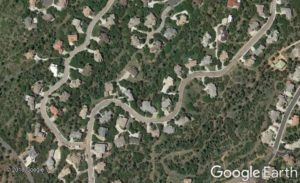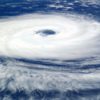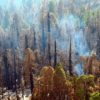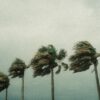Over the last thirty years, the length of wildfire season has increased by nearly 20% around the world. In California, the idea of wildfire ‘season’ is nearly laughable as large growth, damaging wildfires happen year-round on a regular basis now. While wildfires can happen just about anywhere, the western US States are usually at greater risk for experiencing wildfires. Higher rates result from this increased risk and, in some areas, the insurance companies may not offer coverage at all.
Why is wildfire coverage important?

Many communities are building farther into the wilderness (Credit: Google Earth)
As approximately one-third of homes in the United States are in the Wildland Urban Interface (WUI), insurance companies are updating what is and is not covered in cases of wildfire. Insurance companies may factor in wildfire history in the area, home construction materials, vegetation, and topography, for example. In a few of the highest risk areas in the country, some insurance companies have opted to avoid writing policy coverage at all!
When structuring your policy, be sure to ask questions to know what is covered and how you are protected in case of wildfire. Policies may cover additional living expenses (ALE, in case damages or loss make your home uninhabitable), fire department service charges, or repairs and debris removal after a covered loss. There may be an additional option for fire insurance specifically for your non-primary residence. Different carriers offer different protections and add-ons, so be sure to know what you need.
What property features are considered?
Vegetation, alone, on your property isn’t necessarily a cause for concern. Insurers will typically take into account the location and type, as well as density, of the surrounding vegetation. Fire stations and hydrants near your home alleviate some levels of risk as there are preventative resources near the home should a wildfire emergency occur. Topographical features could play heavily on your potential extra costs. If you live in or near notable high risk areas, such as a canyon or the deep woods, additional insurance charges may be added to cover the increased risk to your home from wildfire. Roof type, along with eaves and siding materials, may also play a factor. For example, a wood roof (even if treated) is at much higher risk of catching fire from embers than a clay tile roof.
Homeowners can ensure they maintain significant defensible space that can help slow or stop a wildfire from spreading to your home and property.
Can I do anything to help protect myself?
Do not be discouraged! There are steps you can take to help make your home more fire-resistant. Programs like the Wildfire Partners Program out of Boulder County, Colorado, give homeowners a property assessment with specific tips, updates, landscaping, and removals that decrease their risk to a wildfire. Additionally, some insurance companies have specialists that perform consultations and provide the homeowner a report with recommended improvements to eaves, patios and decks, roofs, and vegetation. In areas with high wildfire risk, insurance companies may require this kind of consultation and follow up work in order to authorize writing the policy. As always, be your own advocate, and take the first steps to giving your home the best chance of survival from a wildfire. However, if you choose to live in a high wildfire risk area, be prepared to pay a bit higher premium to have proper insurance coverage in case of a destructive wildfire.
Source(s):
https://disastersafety.org/wildfire/preventing-fire-damage-other-roofing-tips/
http://www.readyforwildfire.org/Defensible-Space/
http://www.wildfirepartners.org/our-program/



